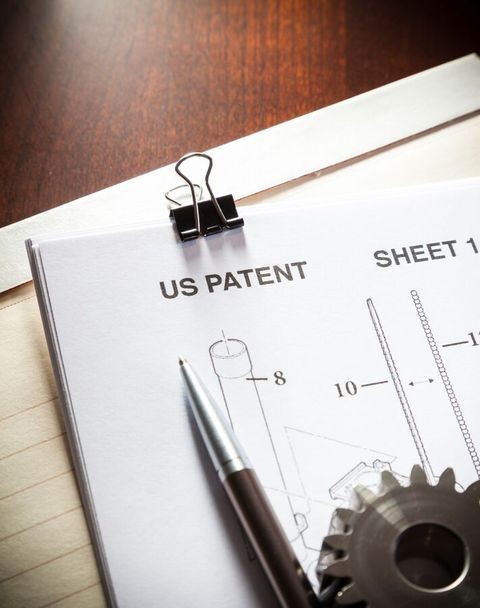Andrew McElligott
Overview
Drew McElligott's practice focuses on patent and trademark litigation, representing leading companies in the pharmaceutical and medical device sectors, as well as consumer products manufacturers.
Career & Education
- Loyola University Cardiovascular Institute
Research Assistant I and Lead Technician, February 2008–August 2011
- Loyola University Cardiovascular Institute
- University of Notre Dame, B.S., 2007
- University of Illinois Chicago School of Law, J.D., 2014
- Illinois
- U.S. Patent and Trademark Office (USPTO)
Professional Activities and Memberships
- The Copyright Society of the USA
- Phi Alpha Delta Legal Fraternity
- The Order of John Marshall
- Board Member, Trial Advocacy and Dispute Resolution Honors Council
Andrew's Insights
Client Alert | 3 min read | 11.20.25
Design patents offer protection for the ornamental appearance of a product, focusing on aspects like its shape and surface decoration, as opposed to the functional aspects protected by utility patents. The scope of a design patent is defined by the drawings and any descriptive language within the patent itself. Recent decisions by the Federal Circuit emphasize the need for clarity in the prosecution history of a design patent in order to preserve desired scope to preserve intentional narrowing (and to avoid unintentional sacrifice of desired claim scope).
Firm News | 8 min read | 08.21.25
Client Alert | 2 min read | 05.27.25
Federal Circuit Resolves Circuit Split on Scope of IPR Estoppel
Firm News | 8 min read | 08.15.24
Recognition
- The Best Lawyers: Ones to Watch–Intellectual Property Law, 2021
- Hon. Howard T. Markey Distinguished Scholar, 2011–2014
- The John Marshall Review of Intellectual Property Law: Lead Articles Editor
Andrew's Insights
Client Alert | 3 min read | 11.20.25
Design patents offer protection for the ornamental appearance of a product, focusing on aspects like its shape and surface decoration, as opposed to the functional aspects protected by utility patents. The scope of a design patent is defined by the drawings and any descriptive language within the patent itself. Recent decisions by the Federal Circuit emphasize the need for clarity in the prosecution history of a design patent in order to preserve desired scope to preserve intentional narrowing (and to avoid unintentional sacrifice of desired claim scope).
Firm News | 8 min read | 08.21.25
Client Alert | 2 min read | 05.27.25
Federal Circuit Resolves Circuit Split on Scope of IPR Estoppel
Firm News | 8 min read | 08.15.24
Insights
SCOTUS' 131-year itch: Georgia v Public.Resource.Org, Inc
|02.18.20
Intellectual Property Magazine
A Higher Bar for Establishing a Licensing-Based Domestic Industry, 37 ITC TRIAL LAW. ASS'N, 337 REP.: The Paul J. Luckern Summer Associate Edition 59 (2013).
|01.01.13
Cardiac myosin binding protein-C is a potential diagnostic biomarker for myocardial infarction, co-author, 52 J. OF MOLECULAR AND CELLULAR CARDIOLOGY 154 (2012).
|01.01.12
Novel approach to admittance to volume conversion for ventricular volume measurement, co-author, CONF PROC IEEE ENG MED BIOL SOC. (2011); 2011:2514-7.
|01.01.11
Connective Tissue Growth Factor Gene Expression in the Failing Human Heart, co-author, 29 THE J. OF HEART AND LUNG TRANSPLANTATION 61 (Supp. 2010).
|01.01.10
Deiodinase Expression in a Rodent Model of Myocardial Infarction, co-author, FASEB J. 23:626.2 (2009).
|01.01.09
Practices
Industries
Andrew's Insights
Client Alert | 3 min read | 11.20.25
Design patents offer protection for the ornamental appearance of a product, focusing on aspects like its shape and surface decoration, as opposed to the functional aspects protected by utility patents. The scope of a design patent is defined by the drawings and any descriptive language within the patent itself. Recent decisions by the Federal Circuit emphasize the need for clarity in the prosecution history of a design patent in order to preserve desired scope to preserve intentional narrowing (and to avoid unintentional sacrifice of desired claim scope).
Firm News | 8 min read | 08.21.25
Client Alert | 2 min read | 05.27.25
Federal Circuit Resolves Circuit Split on Scope of IPR Estoppel
Firm News | 8 min read | 08.15.24






